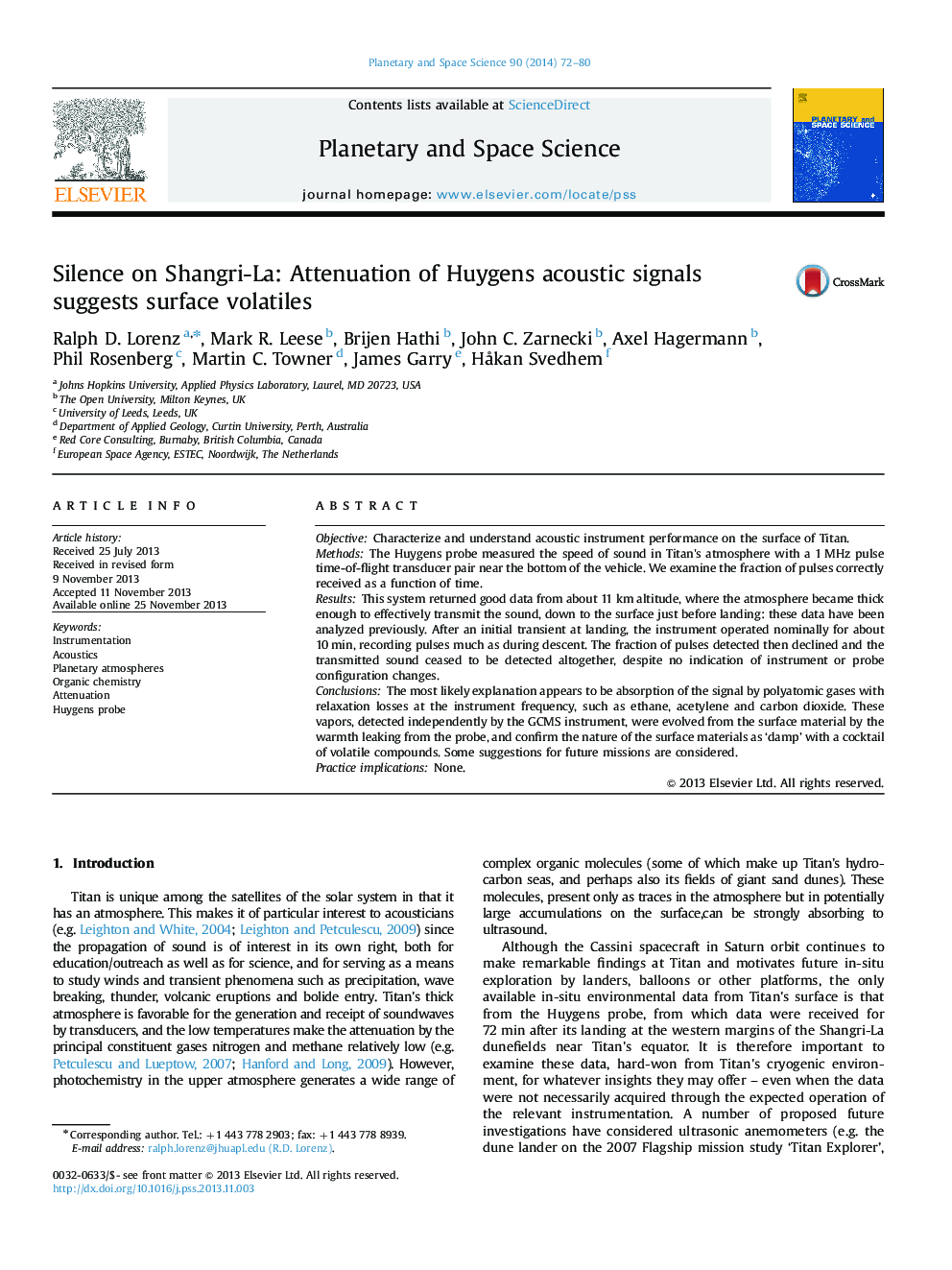| Article ID | Journal | Published Year | Pages | File Type |
|---|---|---|---|---|
| 1781181 | Planetary and Space Science | 2014 | 9 Pages |
•Examines Huygens acoustic data from late descent and surface.•Notes cessation of acoustic pulse detections after a while on surface.•Most probable explanation is accumulation absorbing gases e.g. ethane from surface.•Temperatures and other data are consistent with gas release from surface.
ObjectiveCharacterize and understand acoustic instrument performance on the surface of Titan.MethodsThe Huygens probe measured the speed of sound in Titan's atmosphere with a 1 MHz pulse time-of-flight transducer pair near the bottom of the vehicle. We examine the fraction of pulses correctly received as a function of time.ResultsThis system returned good data from about 11 km altitude, where the atmosphere became thick enough to effectively transmit the sound, down to the surface just before landing: these data have been analyzed previously. After an initial transient at landing, the instrument operated nominally for about 10 min, recording pulses much as during descent. The fraction of pulses detected then declined and the transmitted sound ceased to be detected altogether, despite no indication of instrument or probe configuration changes.ConclusionsThe most likely explanation appears to be absorption of the signal by polyatomic gases with relaxation losses at the instrument frequency, such as ethane, acetylene and carbon dioxide. These vapors, detected independently by the GCMS instrument, were evolved from the surface material by the warmth leaking from the probe, and confirm the nature of the surface materials as ‘damp’ with a cocktail of volatile compounds. Some suggestions for future missions are considered.Practice implicationsNone.
